#d1d1bd Color Information
In a RGB color space, hex #d1d1bd is composed of 82% red, 82% green and 74.1% blue. Whereas in a CMYK color space, it is composed of 0% cyan, 0% magenta, 9.6% yellow and 18% black. It has a hue angle of 60 degrees, a saturation of 17.9% and a lightness of 78%. #d1d1bd color hex could be obtained by blending #ffffff with #a3a37b. Closest websafe color is: #cccccc.
-
- R 82
- G 82
- B 74
-
- C 0
- M 0
- Y 10
- K 18
● #d1d1bd color description : Grayish yellow.
#d1d1bd Color Conversion
The hexadecimal color #d1d1bd has RGB values of R:209, G:209, B:189 and CMYK values of C:0, M:0, Y:0.1, K:0.18. Its decimal value is 13750717.
| Hex triplet | d1d1bd | #d1d1bd |
|---|---|---|
| RGB Decimal | 209, 209, 189 | rgb(209,209,189) |
| RGB Percent | 82, 82, 74.1 | rgb(82%,82%,74.1%) |
| CMYK | 0, 0, 10, 18 | |
| HSL | 60°, 17.9, 78 | hsl(60,17.9%,78%) |
| HSV (or HSB) | 60°, 9.6, 82 | |
| Web Safe | cccccc | #cccccc |
| CIE-LAB | 83.353, -3.47, 9.923 |
|---|---|
| XYZ | 58.279, 62.831, 57.199 |
| xyY | 0.327, 0.352, 62.831 |
| CIE-LCH | 83.353, 10.512, 109.275 |
| CIE-LUV | 83.353, 1.091, 15.185 |
| Hunter-Lab | 79.266, -7.476, 12.702 |
| Binary | 11010001, 11010001, 10111101 |
Color Schemes with #d1d1bd
Alternatives to #d1d1bd
Below, you can see some colors close to #d1d1bd. Having a set of related colors can be useful if you need an inspirational alternative to your original color choice.
#d1d1bd Preview
This text has a font color of #d1d1bd.
<span style="color:#d1d1bd;">Text here</span>This paragraph has a background color of #d1d1bd.
<p style="background-color:#d1d1bd;">Content here</p>This element has a border color of #d1d1bd.
<div style="border:1px solid #d1d1bd;">Content here</div>.text {color:#d1d1bd;}.background {background-color:#d1d1bd;}.border {border:1px solid #d1d1bd;}Shades and Tints of #d1d1bd
A shade is achieved by adding black to any pure hue, while a tint is created by mixing white to any pure color. In this example, #030302 is the darkest color, while #f9f9f7 is the lightest one.
-
#030302
#030302rgb(3,3,2) -
#0f0f0a
#0f0f0argb(15,15,10) -
#1a1a12
#1a1a12rgb(26,26,18) -
#26261b
#26261brgb(38,38,27) -
#323223
#323223rgb(50,50,35) -
#3d3d2b
#3d3d2brgb(61,61,43) -
#494933
#494933rgb(73,73,51) -
#54543b
#54543brgb(84,84,59) -
#606043
#606043rgb(96,96,67) -
#6b6b4b
#6b6b4brgb(107,107,75) -
#777753
#777753rgb(119,119,83) -
#83835b
#83835brgb(131,131,91) -
#8e8e63
#8e8e63rgb(142,142,99)
-
#99996c
#99996crgb(153,153,108) -
#a1a178
#a1a178rgb(161,161,120) -
#a9a983
#a9a983rgb(169,169,131) -
#b1b18f
#b1b18frgb(177,177,143) -
#b9b99a
#b9b99argb(185,185,154) -
#c1c1a6
#c1c1a6rgb(193,193,166) -
#c9c9b1
#c9c9b1rgb(201,201,177) -
#d1d1bd
#d1d1bdrgb(209,209,189) -
#d9d9c9
#d9d9c9rgb(217,217,201) -
#e1e1d4
#e1e1d4rgb(225,225,212) -
#e9e9e0
#e9e9e0rgb(233,233,224) -
#f1f1eb
#f1f1ebrgb(241,241,235) -
#f9f9f7
#f9f9f7rgb(249,249,247)
Tones of #d1d1bd
A tone is produced by adding gray to any pure hue. In this case, #c8c8c6 is the less saturated color, while #fcfc92 is the most saturated one.
-
#c8c8c6
#c8c8c6rgb(200,200,198) -
#cdcdc1
#cdcdc1rgb(205,205,193) -
#d1d1bd
#d1d1bdrgb(209,209,189) -
#d5d5b9
#d5d5b9rgb(213,213,185) -
#dadab4
#dadab4rgb(218,218,180) -
#dedeb0
#dedeb0rgb(222,222,176) -
#e2e2ac
#e2e2acrgb(226,226,172) -
#e7e7a7
#e7e7a7rgb(231,231,167) -
#ebeba3
#ebeba3rgb(235,235,163) -
#efef9f
#efef9frgb(239,239,159) -
#f3f39b
#f3f39brgb(243,243,155) -
#f8f896
#f8f896rgb(248,248,150) -
#fcfc92
#fcfc92rgb(252,252,146)
Color Blindness Simulator
Below, you can see how #d1d1bd is perceived by people affected by a color vision deficiency. This can be useful if you need to ensure your color combinations are accessible to color-blind users.
